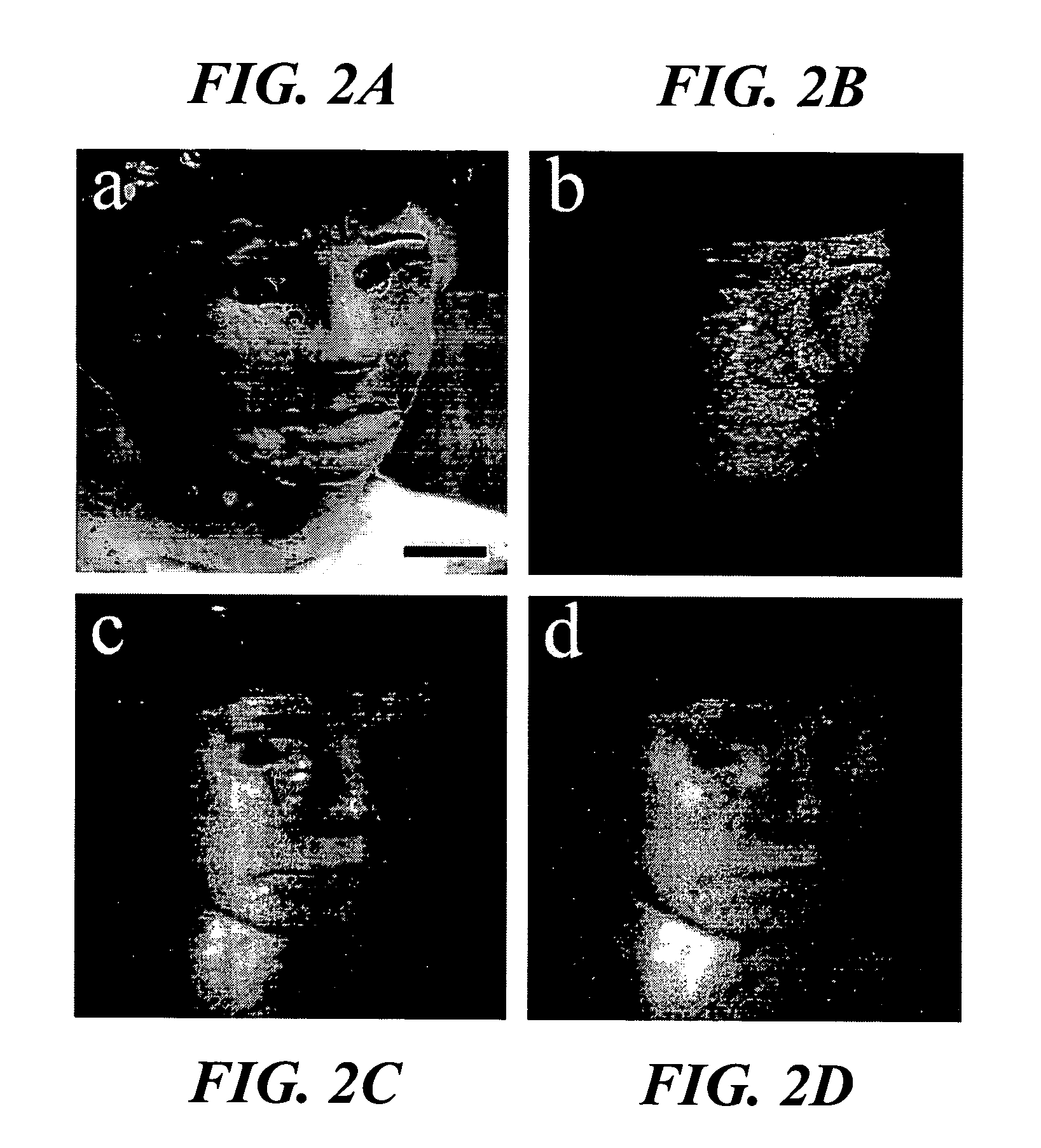Imaging system and related techniques
a technology of image resolution and imaging system, applied in the field of optical imaging, can solve the problems of subtle drop in image resolution, and achieve the effect of improving image quality
- Summary
- Abstract
- Description
- Claims
- Application Information
AI Technical Summary
Benefits of technology
Problems solved by technology
Method used
Image
Examples
Embodiment Construction
[0030] Referring now to FIG. 1, an optical system 10 for spectrally-encoded imaging with a double-clad fiber includes a broadband light source 12 which transmits light to a beam splitter (BS) 14. A first portion of the light is directed toward a double clad fiber (DCF) 16. The light propagates through the DCF 16 and through a collimating lens 18 to a miniature imaging probe 19.
[0031] In FIG. 1, the miniature imaging probe 19 is simulated using a compact lens grating design provided from a lens 20 and a grating 22. A galvanometric optical scanner 24 controlled by a processor 34 to performs slow axis scanning. The scanner directs the light toward a surface of a sample 25.
[0032] Light scattered from the sample 25 is coupled into the inner cladding or core or both the inner cladding and core of the DCF 16 and deflected by the beam splitter 14 (BS) to a spectrometer 29. In this exemplary embodiment, spectrometer 29 includes a lens 28, a diffraction grating 30, and a high-speed line-sca...
PUM
 Login to View More
Login to View More Abstract
Description
Claims
Application Information
 Login to View More
Login to View More - R&D
- Intellectual Property
- Life Sciences
- Materials
- Tech Scout
- Unparalleled Data Quality
- Higher Quality Content
- 60% Fewer Hallucinations
Browse by: Latest US Patents, China's latest patents, Technical Efficacy Thesaurus, Application Domain, Technology Topic, Popular Technical Reports.
© 2025 PatSnap. All rights reserved.Legal|Privacy policy|Modern Slavery Act Transparency Statement|Sitemap|About US| Contact US: help@patsnap.com



